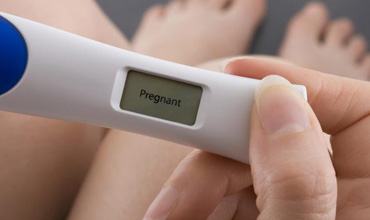Risk Factors for Teenage Pregnancy and Youth Health Needs in Nkalashane, Swaziland

Abstract:
Teenage pregnancy is an enormous challenge in Swaziland. The Nkalashane clinic
(Lubombo region) observed a growing number of teenage pregnancies. In 2014 alone,
49% of pregnancies were among women who had their first child before their 19th
birthday. The objective of this study was to investigate risk factors of teenage pregnancy among teenage mothers (TM), teenage
fathers (TF), and services needed by the at-risk youth (ARY) to prevent teenage
pregnancy. Participants were identified from the clinic’s registers, snowball sampling,
and the 3 schools in the area. Participants completed questionnaires and focus group
discussions (FGDs). Data was summarized using descriptive statistics. 43 TM, 8 TF
and 73 ARY participated. TM had a family history of teenage pregnancy (42%), had
guardians with only a primary education (63%), and had older partners (mean age
difference 5.2 years). Only 44% of TM and 38% of TF reported using contraception
at the time of first pregnancy. Reasons for not using contraception included: lack
of knowledge on pregnancy (47%) and contraception (38%). TM reported engaging in
transactional sex due to peer pressure or lack of money. In FGDs, lack of knowledge,
peer pressure, difficult access to contraception, and lack of parental guidance
were discussed as risk factors. The main risk factors were: lack of knowledge; peer
pressure; intergenerational sex; and difficult access to contraceptives. Recommendations
include: offering comprehensive sexual education to both youth and adults; strengthening
the relationship between schools, communities, and clinics; training clinic staff
on youth-friendly services.
References:
[1]. Aluoja A., Shlik J., Vasar
V., Luuk K., Leinsalu M., (1999) Development
and psychometric properties of the Emotional State Questionnaire, a self-report
questionnaire for depression and anxiety. Nord J Psychiatry · Vol 53 · No 6
[2]. Central Statistical Office. (2007). Swaziland Demographic and Health Survey (2006-2007). Mbabane: Central Statistical Office and
Macro International Inc.
[3]. Chagas de Almeida M. C., Aquino E. M.L.,
(2009) The Role of Education Level in
the Intergenerational Pattern of Adolescent Pregnancy in Brazil. International Perspectives on Sexual and
Reproductive Health, 35(3):139–146
[4]. Dlamini, S. (2002). The problems of teenage mothers in Southern
Hhohho region of Swaziland. Pretoria:
University of South Africa.
[5]. Dulitha, Nalika, Upul, Chrishantha, Alwis,
Hemantha, et al. (2013). Risk factors for teenage pregnancy in Sri Lanka. Health Science Journal, (7),3.
[6]. East P. L., Reyes B.T, Horn E.J. (2007) Association Between Adolescent Pregnancy
And a Family History of Teenage Births. Perspect Sex Reprod Health. 39(2): 108–115
[7]. GmbH (2015) Atlas ti 7.5. GmbH, Berlin.
[8]. Goucelea, W. O. (2009). Risk factors for
Pregnancy among adolescent girls in Equador’s Amazon Basin. Public Heath 26(3).
[9]. Government of Swaziland.(2010). Multiple Indicator Cluster Survey. Mbabane: Government of Swaziland.
[10]. Kirby D., Lepore G. (2007) Sexual Risk and protective factors: factors
affecting teen sexual behaviour, pregnancy, childbearing and sexually transmitted
disease: which are important? Which can you change? ETR Associated, The national campaign to
prevent teen and unplanned pregnancy.
[11]. Liik, M., Paris, M., Vahter, L., Gross-Paju,
K., Haldre, S. (2013). I-ADAM SPET imaging
of serotonin transporter in patients with epilepsy and comorbid depression.
BMC Neurology, 13, 204.
[12]. Medley, A., Kennedy, C., O’Reilly, K.,
Sweat, M. (2009). Effectiveness of Peer
Education Interventions for HIV Prevention in Developing Countries: A Systematic
Review and Meta-Analysis. AIDS Education and Prevention : Official Publication
of the International Society for AIDS Education, 21(3), 181–206.
[13]. Microsoft Corporation (2010) Microsoft Access 2010. Microsoft Corporation.
[14]. Ministry of Health (2012) National Health Sector Strategic Plan (NHSSP)
2008- 2013 Mid-Term Review Report. Ministry of Health, Mbabane, Swaziland
[15]. Odundo, P. A, Anjuri, D. Odhiambo, T.
(2013) Impact of peer education on HIV/AIDS
behaviour change among secondary school youths: a static group comparison analysis
of a peer education project in Rachuonyo County, Kenya. The Lancet, Volume 381,
S101
[16]. Ööpika P, Aluojab A., Kaldaa R., Maaroosa
H-I.(2006) Screening for depression
in primary care. Family Practice; 23: 693–698.
[17]. Saewyc E. M., Magee L. L., Pettingell
S. E., (2004) Teenage Pregnancy and
Associated Risk Behaviors Among Sexually Abused Adolescents. Perspectives on
Sexual and Reproductive Health. Volume 36, Number 3.
[18]. Sodi, E. (2009). Psychological Impact of teenage pregnancy
on teenage teenagers. Limpopo, South
Africa: School of Social Sciences, University of Limpopo.
[19]. StataCorp. (2011). Stata Statistical Software: Release 12. College Station, TX: StataCorp LP.
[20]. WHO.(2014, October). Maternal, newborn, child and adolescent health. Retrieved October 2014, from WHO Website: www.who.int/child_adolescent_health/en/

